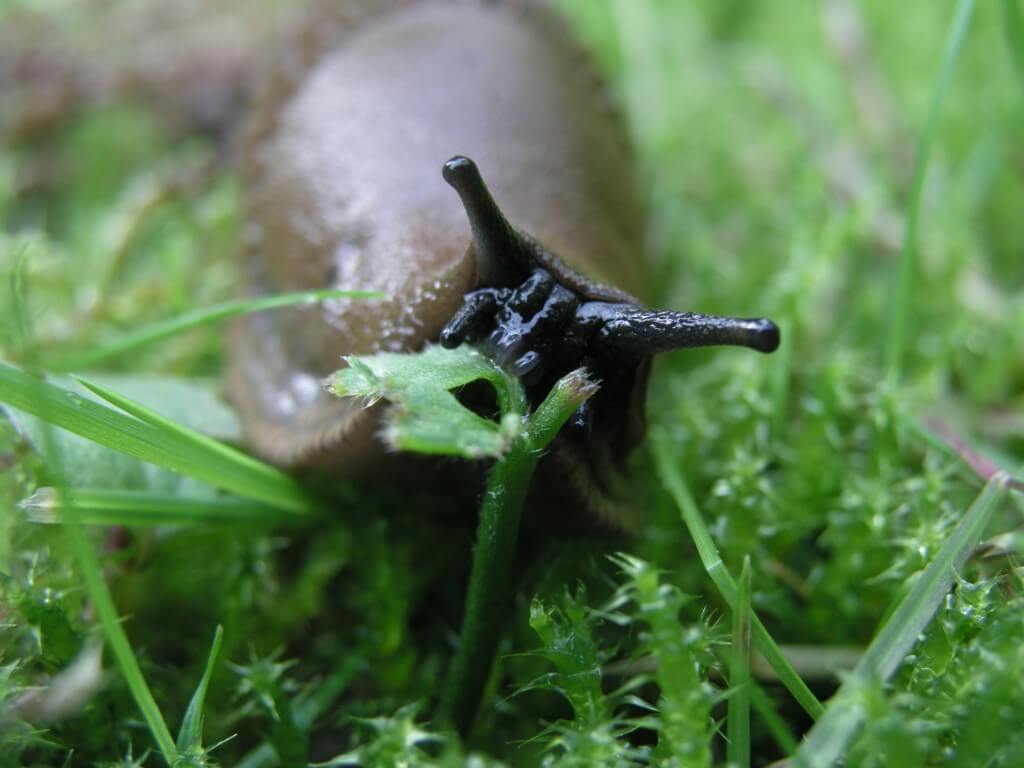Brin Best is an award-winning author who writes from his home in the Yorkshire Dales. He has written over 20 books, many best-sellers in their field, including several titles about biodiversity and natural history. Brin has also been the trustee of three environmental charities, and served as a Council member of the RSPB for four years.

A wildlife mystery has been unfolding inside our house for the last couple of weeks, and it has taught us something new and exciting about the natural world.
The strange series of events began a fortnight ago when we spotted a sinuous, glittering trail on our dining room floor one evening.
It bore all the hallmarks of the slimy trails left by slugs, or their shelled cousins, the snails. But which of these creatures was it – and more importantly, how had it managed to penetrate the walls of our house?
Before we could answer these questions the plot thickened when three more trails appeared on the same area of carpet on consecutive nights.
Then, on the fourth day, success! As we were turning the lights off ready for bed I spotted a small garden slug – no longer than a chipolata sausage – slowly making its way across the carpet towards the kitchen.
I wrapped it up in tissue and banished the offending creature to the vast cavern of our lidded wheelie bin. I figured that it must have found its way in to our house through an open door on one of the warmer days we’ve been experiencing of late. Mystery solved, I thought.
But I was wrong. The following day we found more trails across the carpet and all over our furniture and eventually discovered more slugs, of varying sizes, traversing the carpet. We were being invaded by the slimy things and we still had no idea how they were getting into our house!
Some internet research revealed a startling fact about slugs that cast light on our dining room slitherings.
Remarkably, slugs undertake periodic migrations, sometimes moving several miles at a time, with many individuals often following the same route. It appears that our house is situated on a slug migration route and they have found their way indoors to avoid the ‘Alpine route’ up the walls and over the roof.
Close inspection of our patio doors has revealed a few small openings close to the ground, where determined slugs could squeeze themselves into our house. Once inside, they could continue their carpet-based migration towards the lounge window.
Thankfully, these holes can easily be filled and our slug invasion is soon set to end – or so we hope.
Yet we are strangely thankful for our unusual visitors and their slimy trails, because they have opened up the wonderful world of slug migration. And they’ve reminded us that there’s always something new to learn about wildlife.


You put it in the wheelie bin? , why ?
My mother used to have a garden snail wintering on the inside of her front door each winter! This went on for several winters but always just the one!
I agree with Lorraine – why on earth would Brin put the slug in the wheelie bin?
Brin, I hope the incident wasn’t caught on camera. I seem to remember someone getting into terrible trouble for doing the same thing to their neighbour’s cat
Nice one Ian. I was torn for this blog between slugs and hoverflies. I’m sure you’ll remember those great days in Norwich learning about hovers 🙂 We’ve been recording them in our garden this year and have made some lovely new discoveries
Thanks for your support everyone 😉 My wife was so revolted by the slug invasion inside our house that I thought the wheelie bin might be a suitable place to confine the creature until…the refuse collectors came the next day. Soon, the slug would be exploring ‘pastures new’ – but at least it would be alive! I’m so glad the whole incident wasn’t caught on CCTV otherwise I might have been pilloried via YouTube clip by now. That’s a slippery slope for sure…
Brin, The best way of dealing with this is to employ a few toads, That will save the cost of repairs and complaints from visitors to this blog. ‘Wheelie’ good entertainment for the family as they watch nature in action on the carpet and good subject matter for a book.
Best Wishes, Bob.
Fantastic suggestion Bob – and great to hear from you!
Brin
I don’t want to suggest that the standard of housekeeping in Brin’s house is poor, but I work as a self-employed cleaner, often for elderly people for whom housework has become difficult. Sometimes the maintainance of their houses has been neglected and damp and ot dirty areas appear inside, I often find slugs and their trails in such houses. I think they feed on algal/bacterial films which can grow in damp corners and walls. I think the damp smell may attract the slugs into the house. In one business I used to clean slugs were breeding somewhere close by, maybe even inside the building, and then feeding on the damp patch of plaster in a treatment room; it was a private company supplying hearing aids on behalf of the NHS. They hid the damp patch behind a soundproof hearing testing cubicle of course!
OMG – now people are commenting on our housekeeping skills! Mark asked me to write a wildlife blog and now most of the western world knows about our sloppy housekeeping. Eek!
The Great Grey or Leopard Slug (Limax maximus) is a really common house visitor. It is more closely associated with human habitation than any other British species of slug. It doesn’t usually feed on growing plants like “normal” slugs, preferring rotting vegetation in compost bins (a far better bin in which to dispose of one). The books describe them as a detritivore, so feeding on detritus which can include bits of dropped food or mould. Leopard Slugs are well-known for their homing instinct and will return to their usual resting place after their nocturnal wanders. They are far more active in wet weather and so will often wander further, reaching houses that might not be within their normal home range. Despite the common and scientific names, they are not always grey and are not always large. But they are usually covered in dark spots, hence the name leopard slug.
Yes Tim, we’ve had many of these beauties crawling up our wall over the years. They are lovely 🙂
I am very surprised to read this and would, with due respect, question several things. I had not heard of periodic mass migrations and suspect this is either urban myth, at which the internet is so good at perpetuating, or else relates to somewhere other than the UK. As for ‘several miles’ – a fast slug can manage 2.5mm per second which is about 200 m per day if it travels at this maximum cruising speed non-stop. That comes to 1.5 km per week which is around a mile a week. Migrations of several miles, singly or en masse, not very likely.
The species? It was named as a small garden slug no bigger than a chipolata. Garden slugs do not grow to more than 40mm, so a small garden slug would be smaller than that. As I remember, chipolatas are somewhat larger than that.
I suggest the species is one of the two Cellar Slugs (Limacus flavus or Limacus maculatus) which used to be known as Yellow Slugs. These, even if as large as a chipolata, can squeeze through the narrowest gaps and they do often come into houses (probably helping to clean the under-the-sink cupboard of organic debris). This autumn had had unusual weather and it may be they are coming into houses more than usual (I have heard a separate report of sightings of many of them in a house where they had not been seen before). They are highly nocturnal, often remaining ‘roosting’ until an hour after dark. They can, therefore be seen earlier during longer winter nights than in high summer where they are generally not seen in houses until the small hours.
I think it is unlikley that these are Leopard Slugs, Limax maximus. This slug is brown rather than green or yellow of the cellar slugs. It is also rather drier in appearance, somewhat larger and (being partly carnivorous) is generally not found in the large numbers that the cellar slugs may be seen in.
Why not look at the Field Studies Council guide to slugs of Britain and Ireland by Rowson et al. ISBN 978 – 1 908819 -13-0?